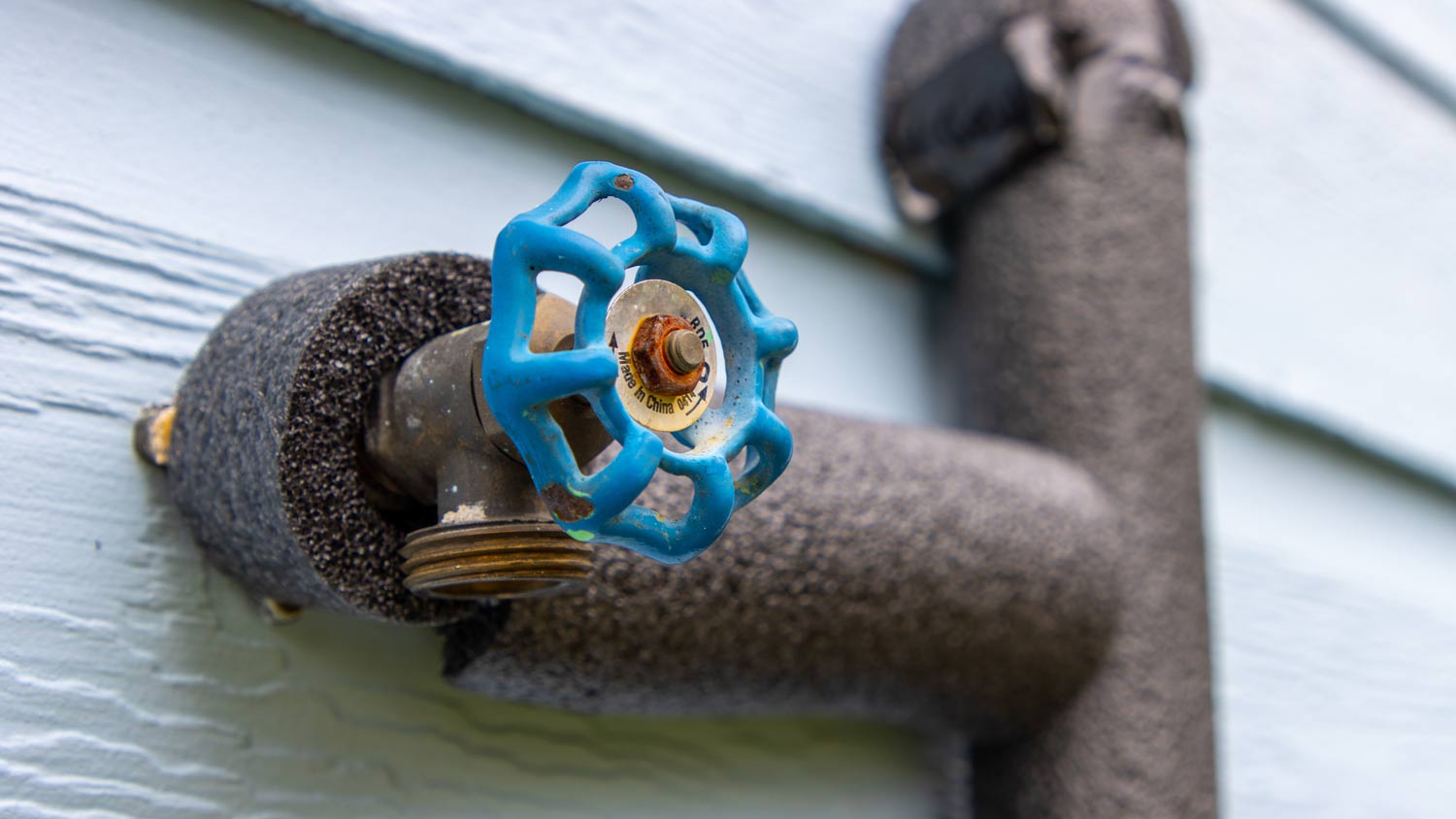
How much does a radiant barrier cost? Our guide breaks down prices by type of barrier and size of your attic space.
There’s more to your attic than grandma’s magazine collection


Attic insulation comes in blanket, loose-fill, spray foam, and panel form.
Factor in your home’s climate and R-value when picking attic insulation.
Use a vapor barrier to prevent moisture.
Attic insulation costs between $1,500 and $3,500 on average.
Attics are the often forgotten space between your roof and your main living area, serving as a long-term home to boxes you’d rather keep out-of-site. But it also plays a role in keeping your home comfortable throughout the seasons. If every winter has you shivering, attic insulation upgrades can help. Luckily, insulating your attic is an easy process that will have you warm and smiling again in no time flat.
According to the EPA, homeowners can save significantly on monthly heating and cooling bills by installing insulation in their attics, floors, and crawl spaces.
Insulation may not always be pretty to look at, but it does an important job. Insulation serves as a barrier between the conditions outside your home—helping to maintain the desired temperature inside. Good insulation keeps out hot air during the summer and freezing air in the winter.
Insulating is good for your wallet because you’re spending less money on heating and cooling your home. Using less energy to maintain the indoor temperature (thanks to insulation) also reduces the need to overwork your home’s HVAC systems. Here’s how it breaks down.
In the case of attic insulation, you can DIY install it or hire a roofing professional in your area to get the job done. The estimated attic insulation cost is between $1,500 and $3,500, depending on insulation materials. According to HomeAdvisor, properly installed attic insulation can shave as much as 50% off your heating bill. Talk about work paying for itself.
Additionally, many power companies offer rebates for customers who install insulation. Reach out to your local utility company to see if they have any deals or offers that could benefit you.
The science of insulation is simple: empty spaces in the home mean open spaces for cold or hot air to fill; insulation fills in those empty places to prevent the transfer of air from outside. Good insulation means you don’t have to crank the AC during those hot summer months, and those chilly winter days won’t require you to overuse your furnace, either.
Like other insulation, attic insulation serves to redistribute heat coming from outside the home. In the summer, when it’s hot outside, good insulation blocks heat from getting inside your home and raising the temperature.
But good insulation should be just as effective in the winter months. When it’s cold outside, the insulation keeps the warm air inside your home. Different types of attic insulation tackle this task in different ways, which we’ll cover next.
If you’re insulating an attic yourself or you’ve hired a professional to do the job, you may see different attic insulation materials used. Here are some of the most popular types of attic insulation used today.
Blanket insulation is a popular DIY choice because, as its name indicates, it comes in blankets or sheets, which can be easily affixed to unfinished parts of your attic. It’s also a more affordable option. The sheets are usually made of plastic, fiberglass, or natural materials like wool and minerals.
Also known as blown-in insulation, this is another popular option for attic insulation—both professionals and DIYers use it. Blown-in insulation costs between $0.50 and $2.30 per square foot for materials and an additional $1.15 to $1.50 per square foot for labor.
The loose-fill method involves taking bags of loose material (usually cellulose, fiberglass, or rockwool) and blowing them into place with a machine designed for this purpose. Rockwool is one of the best materials for making a soundproof room, but rockwool costs the most out of all the loose-fill insulation options.
Keep in mind that loose-fill insulation needs to be installed behind a wall or supporting panel to prevent the loose materials from turning your attic into a real-life snow globe.
Spray foam is a great solution if you’re adding insulation to an already insulated portion of your attic or if the space is oddly shaped and other forms of insulation are a little trickier to install. The foam dries solid and can be just as effective as other insulation methods for your attic. It also has a long lifespan because of its solidity, helping to ensure your home’s insulation R-value stays in tip-top shape. Spray foam insulation costs between $1.50 and $4.90 to install on average.
These panels are much larger than other options (they are sold as 4-foot-by-8-foot boards), making them a better fit for new construction projects than your average attic renovation. They are one of the strongest and most energy-efficient ways to insulate your home, which explains the price tag.
The cost of insulating your attic varies according to what materials you use to get the job done. As covered above, the cost of the insulation material itself can range from $1 to $7 per square foot. The average homeowner will spend around $2,500 to insulate their attic.

R-values are a measurement of how resistant insulation is to heat. The higher the rating, the better the insulation can do its job. Before you buy insulation, double-check which R-value is recommended for the area where you live. The standard recommendation is an R-value rating of 38, though that can vary.
Because attics often become a place for storing stuff, it’s normal for them to be covered in boxes. If you’re insulating your attic, remedy the clutter first! Find another place, even a temporary one, where those boxes and doo-dads can live. If you’re hiring a pro, they may want to start with the floor of your attic, which often requires removing existing flooring because the insulation is often placed under attic floorboards.
Vapor barriers are warriors in the epic battle between homeowners and water damage. Your roof will see quite a bit of water in its lifetime, and if there are leaks, they will affect the attic first. Vapor barriers can be installed in tandem with attic insulation to prevent moisture from causing any structural damage or shortening the life of your attic insulation.
In homes built before 1970, there is a high likelihood that the attics have asbestos insulation, which is a serious health risk. If your home’s attic hasn’t been touched since then, resist the urge to start inspecting your attic and pulling out old insulation. Contact a professional who can take the appropriate measures and remove the asbestos safely.
In warmer and humid climates especially, like in some southern parts of the United States, moisture can accumulate in your attic with improper installation of your insulation. That’s why it’s important to know how to insulate your attic correctly and prevent costly mold remediation and replacement insulation. This moisture can cause mold and mildew to grow in your attic and negatively affect your air quality—all while reducing your insulation’s R-value.
If you have asbestos in your attic, it’s important to learn about what asbestos insulation is and how to safely navigate around it before attempting to install new insulation.
From average costs to expert advice, get all the answers you need to get your job done.

How much does a radiant barrier cost? Our guide breaks down prices by type of barrier and size of your attic space.

Trying to calculate how much spray foam insulation costs? Our in-depth guide breaks down pricing by type, amount, and where you install it.

The cost to insulate a basement varies based on materials, size, and other factors, as well as how much of the work you wish to perform yourself.

How much does it cost to insulate a wall? This guide breaks down the associated costs and variables to consider when setting your project budget.

Wondering how much insulation to buy? Use our calculator to determine how much insulation you need based on your home's square footage and R-value needs.

Find out the average pipe insulation cost, including material and labor prices, plus tips to save money on your project.